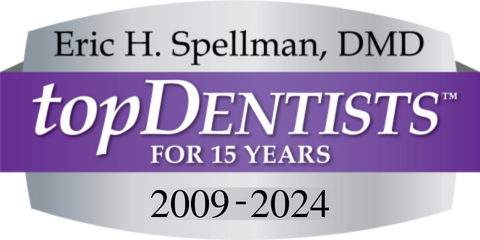Dental bridges are a common and effective restorative dentistry solution for replacing missing teeth, helping to restore a patient’s smile and oral functionality. However, like any dental appliance, they come with their potential issues. Understanding these problems and how to prevent them can help you maintain the health of your dental bridge and overall oral health.
Common Problems with Dental Bridges
1. Decay or Damage to Anchor Teeth
The anchor teeth, or abutment teeth, support the dental bridge. These teeth can become susceptible to decay or damage over time, compromising the bridge’s stability.
2. Sensitivity in Surrounding Teeth and Gums
The teeth and gums surrounding the bridge are expected to experience sensitivity. This can be due to various factors, including gum recession or improper fitting of the bridge.
3. Difficulty Cleaning Under the Bridge
Cleaning under a dental bridge can be challenging, leading to plaque buildup, bad breath, and even gum disease if not managed properly.
4. A Poor Fit Can Cause Discomfort or Affect Speech
If the bridge does not fit correctly, it can cause discomfort and irritation and affect speech.
5. Wear or Damage to the Bridge Material
Over time, the material of the bridge can wear down or get damaged, affecting its appearance and functionality.
Solutions and Tips for Dental Bridge Problems
1. Regular Dental Exam & Check-ups
Regular visits to your dentist, Eric Spellman, DMD, will help monitor the health of your anchor teeth and the overall condition of your dental bridge. Early detection is the best preventative measure for more severe problems later on.
2. Practice Good Oral Hygiene
Maintain a rigorous oral hygiene routine to reduce sensitivity and prevent gum disease. Good oral hygiene routines include flossing, brushing twice daily, and using mouthwash.
3. Use Specialized Cleaning Tools
Effective cleaning under the bridge is crucial. Tools like floss threaders or water flossers aid with the removal of plaque and food particles from hard-to-reach areas.
4. Seek Immediate Adjustment
If your bridge feels uncomfortable or affects your speech, contact your dentist immediately for an adjustment. A properly fitting bridge should not cause discomfort.
5. Follow Dietary and Oral Health Guidelines
Our dentist, Dr. Eric Spellman, will recommend avoiding hard and sticky food, which could damage your dental bridge. It is also recommended that you follow a well balanced diet that is rich in vitamins and nutrients to promote oral health.
Preventive Measures to Maintain A Dental Bridge
1. Regular Dental Check-ups
Frequent dental check-ups are essential for detecting and addressing issues with your anchor teeth early. Regular visits will help ensure the long-term health of your dental bridge.
2. Strict Oral Hygiene Routine
Encourage a strict oral hygiene routine, including special cleaning techniques under the bridge, to prevent decay and sensitivity.
3. Balanced Diet
Maintaining a balanced diet has a significant role in your overall oral health and the longevity of the bridge material. Include calcium-rich foods to strengthen your teeth.
4. Use Protective Mouthguards
If you engage in physical activities, use protective mouthguards to prevent damage to your dental bridge.
5. Report Discomfort Immediately
If you experience any discomfort or notice changes in your speech, report them to your Larchmont dentist, Dr. Eric Spellman immediately. Timely adjustments can prevent long-term issues.
By being aware of these common dental bridge problems and solutions, you can take preventive measures to maintain the health and functionality of your dental bridge for years to come. Regular visits to your dentist, like Dr. Eric Spellman in Larchmont, NY, can provide personalized advice and care tailored to your specific needs.
Schedule A Dental Bridge Evaluation Today!
Contact our dental team at 914-834-2941 to learn more about the common dental bridge problems and solutions and discuss the best restorative treatments for your smile. For over 30 years, our Larchmont dentist has treated patients with missing teeth from Larchmont, Mamaroneck, Scarsdale, and throughout Westchester County.
 Rediscover radiant, youthful skin with laser skin rejuvenation that uses advanced, cutting-edge technology to enhance your skin’s natural beauty by targeting imperfections like fine lines, wrinkles, and age spots. Dr. Eric Spellman uses the laser hand piece to restore your youthful, smooth complexion by stimulating collagen production deep within the skin.
Rediscover radiant, youthful skin with laser skin rejuvenation that uses advanced, cutting-edge technology to enhance your skin’s natural beauty by targeting imperfections like fine lines, wrinkles, and age spots. Dr. Eric Spellman uses the laser hand piece to restore your youthful, smooth complexion by stimulating collagen production deep within the skin.


 Laser snoring relief is a cutting-edge, non-invasive procedure designed to help snoring sufferers enjoy a better night’s sleep. Dr. Eric Spellman uses a gentle, non-invasive laser; the treatment works by tightening throat tissues and reducing the vibrations that cause snoring. Our non-invasive snoring relief laser treatments in Larchmont are quick, in-office procedures with minimal discomfort; this innovative option provides long-lasting relief for improved sleep quality and overall health.
Laser snoring relief is a cutting-edge, non-invasive procedure designed to help snoring sufferers enjoy a better night’s sleep. Dr. Eric Spellman uses a gentle, non-invasive laser; the treatment works by tightening throat tissues and reducing the vibrations that cause snoring. Our non-invasive snoring relief laser treatments in Larchmont are quick, in-office procedures with minimal discomfort; this innovative option provides long-lasting relief for improved sleep quality and overall health.
 Gum disease, also known as periodontal disease, is a common dental condition affecting the gums and supporting structures of the teeth. In severe cases, it can impact the jaw bone. Early detection and treatment are necessary for preventing further damage and maintaining oral health. You should be aware of four key signs of gum disease to help identify and treat this condition promptly. The sooner you treat gum disease, the better the outcome.
Gum disease, also known as periodontal disease, is a common dental condition affecting the gums and supporting structures of the teeth. In severe cases, it can impact the jaw bone. Early detection and treatment are necessary for preventing further damage and maintaining oral health. You should be aware of four key signs of gum disease to help identify and treat this condition promptly. The sooner you treat gum disease, the better the outcome.